The x86 Power Myth Busted: In-Depth Clover Trail Power Analysis
by Anand Lal Shimpi on December 24, 2012 5:00 PM ESTWebXPRT
I also included Principled Technologies' new HTML5/js web test suite WebXPRT in our power analysis. Like the rest of the tests, Intel already outperforms NVIDIA here but does so with lower power consumption. A big part of the advantage continues to be lower power consumption on the GPU rail, surprisingly enough.
TouchXPRT
As our first native client test, we turned to PT's TouchXPRT 2013. As there is no "run-all" functionality in the TouchXPRT benchmark, we had to present individual power curves for each benchmark. The story told here is really more of the same. On the CPU side, Intel is able to deliver better performance at lower power consumption. On the GPU side, performance is good enough for these tasks but once again, is delivered at lower power consumption.


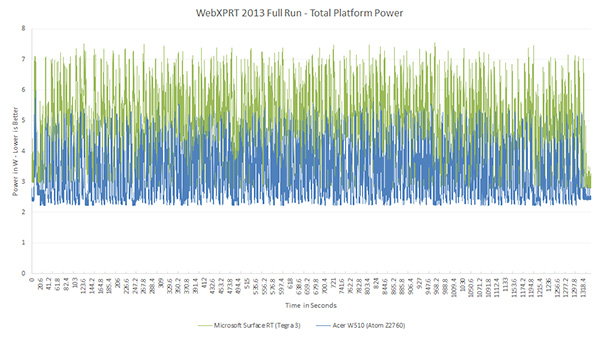

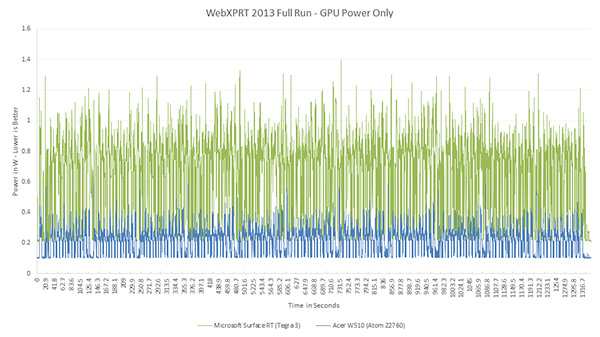
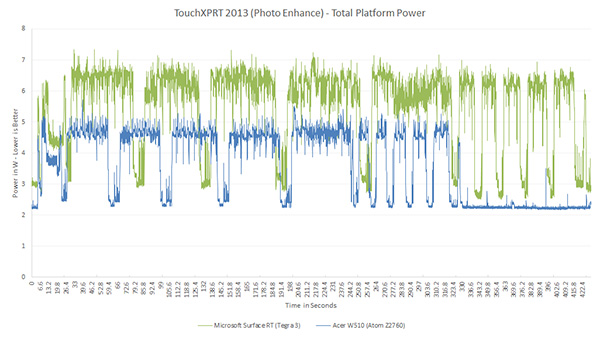
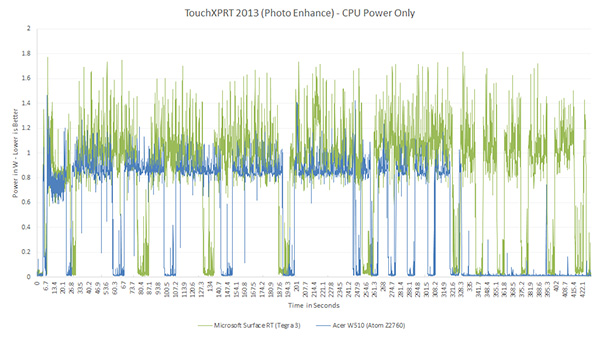
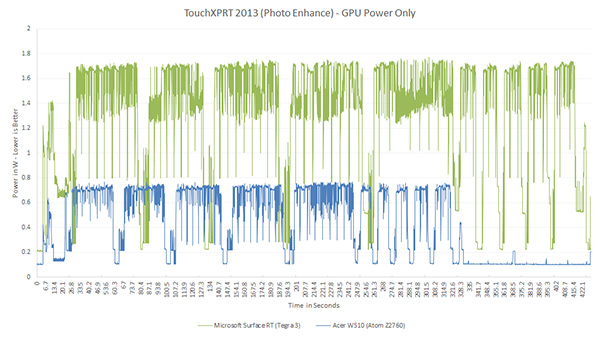

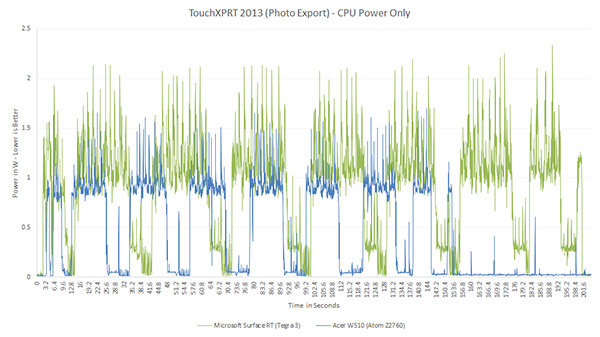
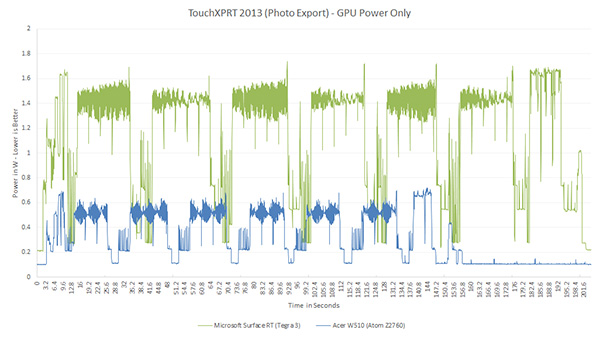
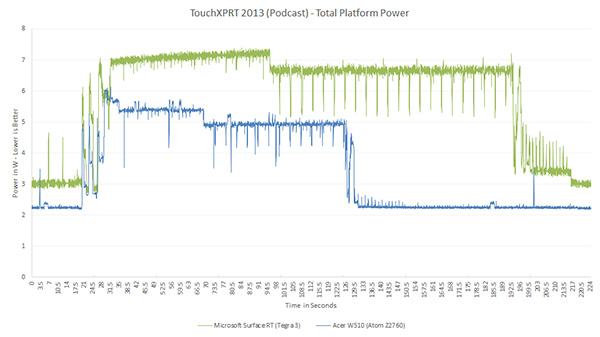

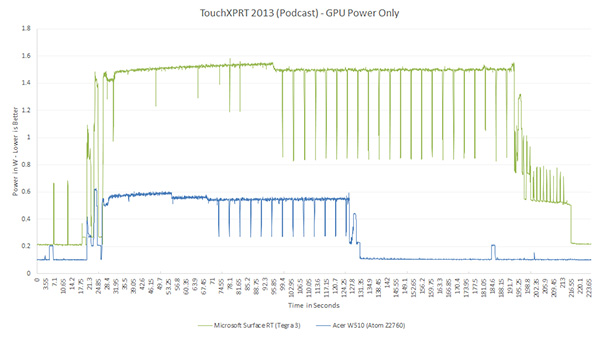
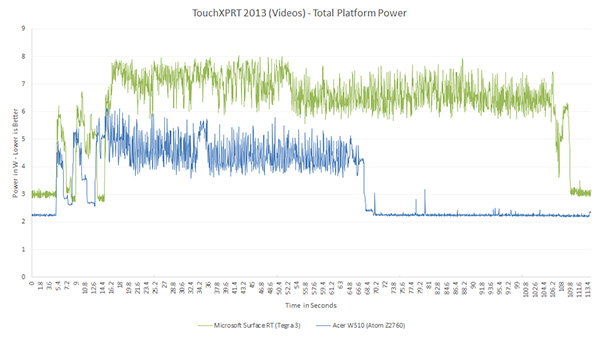
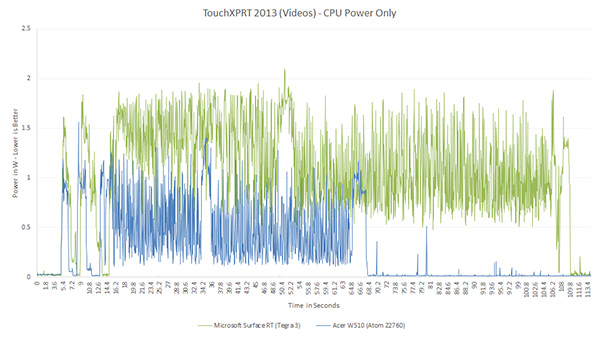
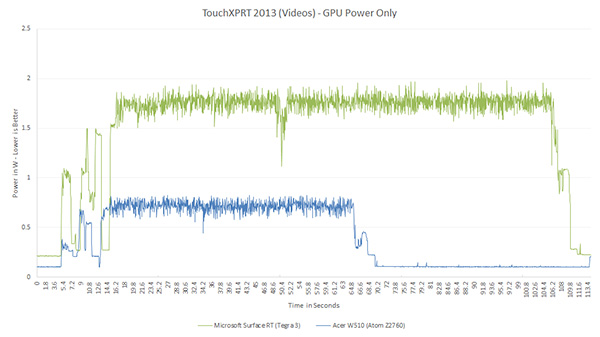








163 Comments
View All Comments
flashbacck - Monday, December 24, 2012 - link
"... Intel adopted a "no more surprises" policy... "What the F does that even mean? Don't build shitty products? Only upper management could come up with this genius policy.
magreen - Monday, December 24, 2012 - link
Now we had a chance to hear your comment, and boy you're just a straight shooter with upper management written all over you.lmcd - Tuesday, December 25, 2012 - link
Intel's philosophy pays off in Windows, for sure.Now, they've got Qualcomm to beat. That's going to take a bit more doing than beating a year-old chip.
lunarx3dfx - Tuesday, December 25, 2012 - link
I think several people misunderstood the purpose of this article. The purpose was to make the point clear that x86 could be performance/watt comparable to arm. Yes, clover trail is only beating a Tegra, but considering where Intel was only a year ago this looks promising. I don't see Anand being biased here, I see him making a point about power efficiency.coolhund - Tuesday, December 25, 2012 - link
Really? The x86 processor was an out of order architecture?Nope. Apples and oranges that way.
Gigaplex - Tuesday, December 25, 2012 - link
So what if it's not out of order? That's got nothing to do with the ISA. ARM could build an out of order chip if they wanted.coolhund - Tuesday, December 25, 2012 - link
The A9 is out of order, so is the A15. Thats not what I meant.yyrkoon - Tuesday, December 25, 2012 - link
The myth where ARM did perform more power efficiently than x86 before Intel starting caring ?Simple matter of the fact is that A9 does not encompass what ARM *is* (Neither does Tegra 3 for that matter ), and there are far more ARM based processors out in the world than Intel. This will likely continue into the foreseeable future. Simply because "ARM" is not locked into a specific market in the compute space.
Personally I am all for seeing Intel improve the power efficiency of their products. However, my own opinion is that Intel should either ditch atom, and improve their server, desktop, and mobile processors. And / or create another processor(s) that can decide on what it really wants to be. e.g. embedded application processor, or not.
One thing is for sure. Intel has their work cut out for them if they want to compete with ARM in the embedded market. One thing worth mentioning that is kind of ironic. x86 is supposed to be the general purpose type processor, yet the usage of various ARM based processor seem to be more diverse.
wsw1982 - Tuesday, December 25, 2012 - link
The atom want to be used in the smartphone and cheap tablet market, I think, at least now, Intel is quite clear about it. And it's very competitive now with the ARM solutions, so I don't see the reason why intel should abandon it along with the smartphone market. The core has been actually improved a lot and, to me, always the main focus of Intel.beginner99 - Tuesday, December 25, 2012 - link
... to compare to tegra 3. I think most would agree that comparing to dual-core A15 the outcome would be vastly different. But then I think we should not get fooled by Intel. As was mentioned this is still only a derivative of the original Atom on a smaller node. For Intel this is IMHO just a current placeholder. The real deal will come with the complete new uArch for Atom and if they manage to "pull off a Core 2" again (which I believe) it won't look pretty for Team ARM.